Defining Minimal – Part 1
‘The Minimal Craze’
‘The Barefoot Renaissance’
‘La Revolucion de Vibram Cinco Fingers’
Call it whatever you want, but it’s here to stay. Shoes are getting flatter. Shoes are getting lighter. Many people want to run more ‘naturally’ – or with better form.
You may have some questions about this. I certainly have some questions. Does this type of running or this type of shoe unilaterally make us less injury prone in the long term? What about short term? Are any fast runners using them?
We’ve certainly written on this topic before (see articles linked at the bottom of this page). What this series of articles aims to do is define minimal. As of today, we talk vaguely in terms such as ‘traditional shoes’, ‘minimal shoes’, ‘low-ramp-but-cushioned shoes’ – what do they mean? Let’s reach a consensus.
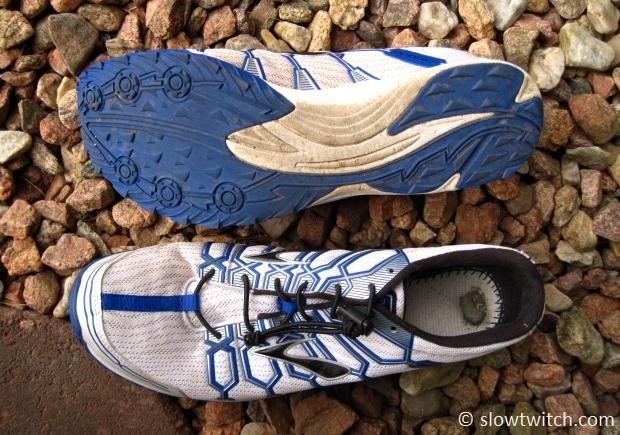
I embarked on a quest to understand all of these things beginning a decade ago, when the idea of ‘minimal’ was still rather new. I wanted to avoid injury, but was also driven by a seemingly unstoppable sense of curiosity. I wanted to know everything about it. At 19 years old, I purchased Tim Noakes’ Lore of Running. I read about Pose, Chi, Pete Egoscue, and learned how to be a Peaceful Warrior.
Back then, the options were limited. For some help, I reconnected with my middle school cross country coach. Back when he was my running coach, he ran in ‘normal’ running shoes. They had a heel twice as high as the forefoot. They had ‘posting’, or a denser foam in portions of the inboard side of the shoe. My old coach was also chronically injured in his 40s. After years of struggle, he decided to do something about it. He wanted to learn how to run properly. He wanted to fix his feet. He began slowly weaning down to thinner and thinner shoes, reading books, and strengthening his feet. As a result, my old injured coach would later run ultra marathons barefoot or in thin shoes – free of injury – in his fifties and sixties.
So what does a college kid do? Follow suit. I started running in thin shoes. The main problem was that there were almost no choices. Vibram was just bringing the Five Finger to market at the time. I ran in racing flats with the insoles removed (my Brooks Mach 4 spikeless are pictured above). I ran in gum-soled wrestling shoes. I qualified for Kona wearing a pair of Asics tai chi shoes – they’re completely flat and have about a 3mm thick sole:
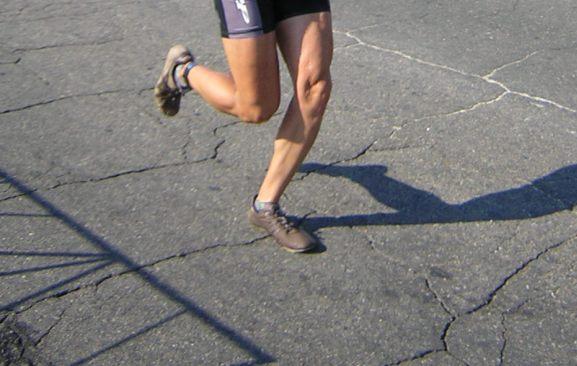
I never took to running barefoot (except on grass), but I had a closet full of weird stuff. I bought bulk rubber matting, cut out ‘soles’, and glued them to beach volleyball socks using barge cement. In case you’re wondering, do NOT try this at home.

Some folks tell me that people who can ‘get away with that’ are simply gifted, natural runners. With those people – I have a bone to pick. I grew up swimming, and have historically always struggled as a runner. It has taken me years and years to get to 'decent running' – which is very far from the pointy end of the field. Heck, my old coach learned how to do it at fifty years old. The Born to Run message has traveled far and wide by now. It can be done. [Full disclosure: For what it's worth, I no longer run in the very, very thin shoes].
But… do minimal shoes actually make you faster?
That’s the real question. Do they? I don’t know. The only thing I can say for sure is that a lighter shoe is faster than a heavy one, and that minimal shoes tend to be light. However – super light weight is never fast if you can’t run without injury in them. That’s the rub.
What this article IS
Let’s make it clear.
This series of articles is an attempt to explain where ‘minimal’ came from, what it means, and where it is going. We will look at my personal experience and experiments with minimal, in hopes of saving you the time and effort. This article will share the perspectives of many different running shoe companies – the details of their product lines, and their general stance on the issue. Finally, we will attempt to lay out a Slowtwitch-approved set of definitions for what makes a shoe ‘minimal’ or not. As of today, there simply are not any standards – and we feel this is a void that desperately needs filling.
What this article is NOT
These articles are NOT a suggestion that minimal shoes:
-Are unilaterally faster than traditional shoes
-Are unilaterally 'better' than traditional shoes
-Prevent injury
-Are the right or wrong choice for you
-Do anything that any company says they do
This is a research and information-sharing piece – period. We invite you to draw your own conclusions, whether you agree or disagree with us. Our aim is simply to better understand this new market segment and spread the knowledge, so we can all make a more informed decision on what to buy.
To kick off the series, we have an interview with my friend, Matt Ebersole. He is an owner of Athletic Annex, a specialty running retail store in Indianapolis, Indiana. He is also the owner of Personal Best Training, a coaching service for runners and triathletes.

I chose to interview Matt for a few reasons. First (and most obvious), he was accessible. Next, not only does he have education to back himself up (a degree in Exercise Science & Wellness from Ball State University) – but also a lifelong desire to learn about running. He has been speaking, coaching, and writing for over 20 years, and can tell you some fascinating stories about having dinner with guys like Arthur Lydiard and Frank Shorter. Finally, after my years in the industry and asking a lot of questions, Matt strikes me as someone who has a very balanced viewpoint on running footwear. I wanted to speak with someone that specifically does not work for a shoe company. Yes, he is in the business of selling such footwear, but I trust his honesty and unbiased opinion. I wanted to find someone that A) had more experience than me, B) has tried a LOT of shoes in their lifetime, and C) does not hold a position that is too strongly weight for or against minimal shoes. What would someone like that have to say about the new idea of minimal? Is it really new?
Slowtwitch: Thanks for your time, Matt.
Matt Ebersole: Of course.
ST: As you know, I want to discuss the new craze of ‘minimal’ running footwear. I’d like to start very high level. In your experience, do minimal shoes inherently make people faster or less prone to injury? And if so, why?
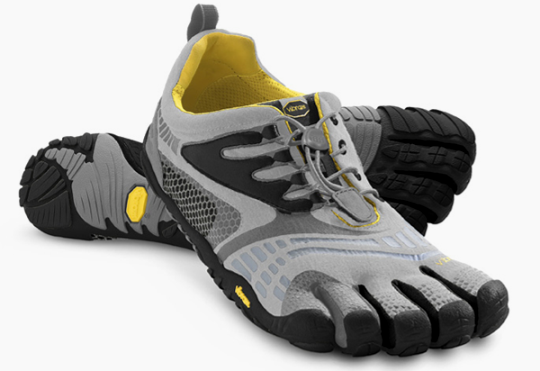
Ebersole: The biggest benefit that I’ve seen from the minimalist movement – or whatever you want to call it – is that it’s taught some people how to run because pain is a great teacher. If you have big pillows strapped to your feet, you can do all kinds of wrong things – primarily over-striding – and there’s not a great consequence for that. You might have some injury problems; I think a lot of people who say, “I was running in traditional shoes and I was always hurt… and I’m running in these [minimal shoes] now and I’m not hurt anymore.” I would bet that most of those people were over-striding [in the supportive shoes].
Now we do see plenty of people who have gone to Vibram or something similar and they are running slower because it hurts to run any faster. Their cadence is probably too high. If they put one foot just in front of the other, it doesn’t hurt. You can run barefoot that way.
The people that it has helped… I think it’s just teaching them to run at an appropriate cadence.
ST: Do you know of anyone who is running professionally and doing well in super-minimal shoes?
Ebersole: No… no. There’s a local guy here that’s running 2:45 to 2:50 for a marathon… and that’s probably the fastest guy that I know of that’s wearing them.
ST: I look at some of the track racing shoes, and I think they could certainly be called light and minimal, but they’re very different from the shoes in the modern ‘minimal craze’. Just looking at shoes stiffness, a track racing shoe is super stiff – which is diametrically opposed to what all of the minimal shoe companies say is good for you.

Ebersole: When it comes to running mechanics, a major point of the plantar fascia is to stiffen the foot – for the foot to be used as a lever. And I think you’ll see an instant correlation here with cycling. If you put a stiff spike plate on something, your foot becomes a more effective lever. That’s not saying you won’t kill your feet if you run too far in something like that, but a power sprint spike has a spike plate that runs almost the full length of the shoe and is just stiff as can be. If you imagine putting force plates every ten meters in a 100 meter race – the force with which elite athletes are hitting the ground is incredible compared to someone that’s going out and running six minute pace, let alone ten or twelve minute pace. Just look at the resulting stride length – even at high school level – count how many steps they take to get from the start line to the finish line. They’re hitting the ground only a handful of times. Their stride length is huge.
Sure, you could call track shoes ‘minimal’, or maybe even ‘sub-minimal’. If you put the shoe on the ground, the forefoot is actually higher than the heel. It’s not level. But they’re certainly built for a different purpose than a Vibram.
I was lucky enough to be at a small group dinner with Arthur Lydiard, and he had an interesting opinion. He said you should use thicker-soled shoes on hard workout days because you’re pounding the ground a lot harder and you need more protection. He wasn’t really suggesting people do that, but he said logically that’s what you should do. When you’re out jogging, you’re not hitting the ground with nearly as much force because your stride length is maybe half the distance.
ST: What’s your take on it?
Ebersole: Right now, I’m running basically four times a week. I wear – for the purposes of this interview – a traditional training shoe for an easy Monday and a long run Saturday. On my other two days when I’m doing something that’s a little bit higher quality, I’m doing most of my work in racing flats. The ones I’m normally using are a 4mm [heel-toe drop].
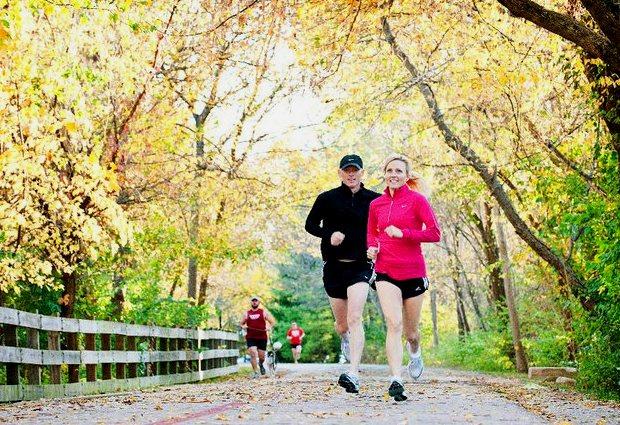
ST: Where do you start to define ‘minimal’ when looking at heel drop?
Ebersole: I would say you get in to that range as soon as the heel is no longer twice as high as the forefoot. Once that heel is less than twice as high, we’re at least heading that direction. If you look at running shoes over several decades, it was 22-11, 24-12 for midsole heights (who knows what the total stack heights were). For somebody that’s been in those shoes for a long time and they’re not eighteen years old, it takes more transition time to get down there. So okay, let’s start with a shoe that has 8mm differential instead of 12mm, and go from there.
ST: Do you think that there is anything inherent in having a sloped sole (i.e. having some measure of heel-to-drop) that makes a shoe more apt to prevent injury? Does that particular attribute of ‘normal’ running shoes do anything in-and-of itself?
Most of the minimal shoe companies recommend weaning down to less drop – which is fine. I'm coming at it from this angle: What if heel-toe drop never existed? What if we ran in shoes that were 14mm in the heel, and 14mm in the toe… or whatever thickness you want. Assume that every casual shoe, boot, and sneaker in history was zero-drop. If that was the case, would we all run in zero drop everything, regardless of thickness?
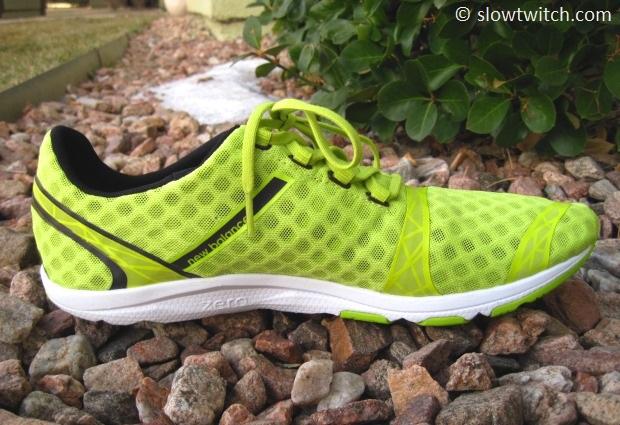
Ebersole: I do not think the slope of a shoe matters if the runner has time to adapt. If we had [always worn zero drop shoes], I expect we would all be fine. There would still be some cases where heel lift would be helpful to take stress off of gastroc complex issues.
I also do not think [reducing heel-toe drop] inherently reduces injury, either. I think any injury reduction with a lower heel drop is a result of learning not to over-stride and to land with less impact. Dropping the heel [too quickly], of course, can cause injury due to lack of appropriate adaption.
My guess as to why we got into significant heel lift was probably for two reasons. 1) Due to vanity. Adding a heel lift in daily footwear makes you appear taller. This carried over to all types of shoes, including running. 2) As more people began running for sport and recreation there were scarce footwear options. If you asked someone running in PF Flyers or Chuck Taylors what they wanted, they would say cushioning. Logically the result was a thicker midsole with a downward ramp to help the foot and body roll forward. I’m just spitballin' here.
ST: Why don’t running shoe companies publish heel-toe drop numbers more? We’re seeing it now more with the ‘zero drop’ shoes; if someone has their heart set on zero, they want to see it on the label. I feel like with ‘regular running shoes’ you don’t see that on the label with the size, weight, and color.
Ebersole: A couple reasons. One, I don’t think that until recent years it was a big deal. Also – and I’m just guessing here – I think they don’t want to put, “We’re a 24-12!”, because someone that might like the shoe or otherwise buy the shoe will say, “Oh, I’m not buying that… that’s for old people…”
But if the heel is lower, they’re publishing it. I just don’t think it was a big deal until the last couple years; running shoe companies probably didn’t think anybody cared. Mizuno actually had it in their catalog for a while, and interestingly enough, it has been dropped from the new catalog.
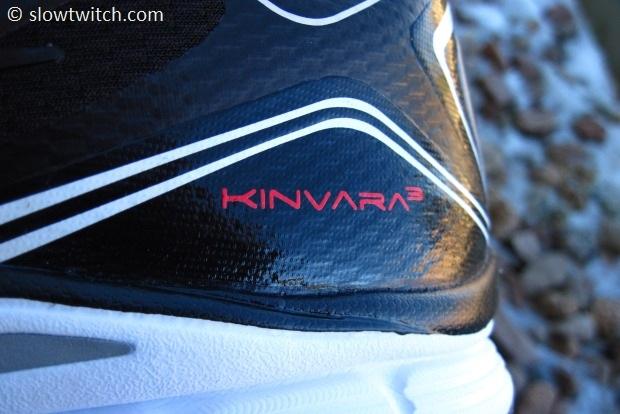
ST: Personally, I think we’re going to start seeing a lot more options within brands’ lines – perhaps a zero and a ‘plus 4’ in the same shoe. Maybe it will be like a ‘small’, ‘medium’, ‘large’, like what Nike did with the Free. They started with the really thin Free, and then they added the 5.0, the 7.0… you can sort of pick your flavor.
Ebersole: Take a shoe like the Brooks Adrenaline; a really high-selling shoe. You can do a neutral version called the Defiance; didn’t really have to change too much. And now if you can do a 12, 8, 4, and zero drop in the same shoe, you’re saving a lot of money [as a manufacturer]. You need to make different midsole molds, but the upper is the same, all of those things are the same. It’ll be a headache for retailers like us because you have to stock so many things, but eventually they’ll sort out which are selling the best – just like with width. Last year, there were three widths for the Defiance, and next season it’s going to be one. They clearly weren’t selling enough widths. If they figure out that they’re selling 12 and 8mm drop shoes, but only three percent of the 4 and 2mm drop – those are gone. Maybe they’ll decide to sell 12, 8, and 0. Something like that makes sense to me.
The brand that’s taken the biggest risk on this – I think – is Saucony. They’ve taken their best-selling models, the Guide and the Ride, and they dropped them down. Or actually, raised the forefoot. Everyone else is saying, ‘This is our minimal line’ – separate from the other shoes. Saucony is saying – ‘here’s our best selling shoe, and we’re going to drop it down a little bit’.
ST: That’s really interesting to me, because I feel like they don’t call it out as clearly as the brands with a separate minimal line – and they’ve almost done it behind the scenes.
Ebersole: They do write on their insoles what the drop is, which is unique. It’s a line of ovals that say ’12, 8, 4’ – and they fill the oval in on what the drop is for that shoe.
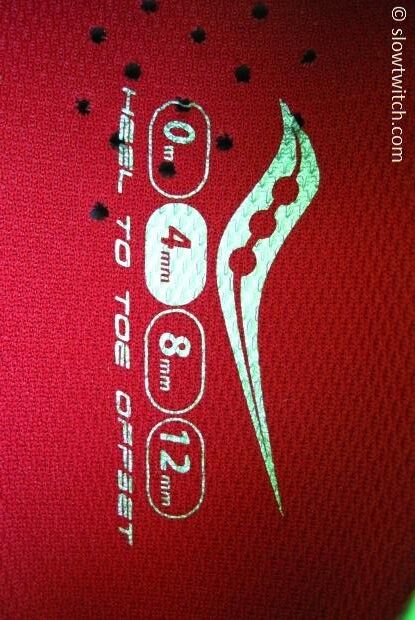
If you look at the Kona count, Saucony was fairly high on that. It’d be interesting to get a breakdown on that, because I bet a lot of those were Kinvaras and Mirages. For our store – far and away – for people that are buying them to run in, those two models are it. [Brooks] Pure Project has done well for the same reason – you have a minimal shoe that looks trendy, but is soft. That’s the type of minimal shoe that’s selling the best.
That leads to another point. Most running shoes are sold not because they have support features or cushion features, etc. It’s step-in feel. That’s a fancy way of saying, “How does the shoe feel when you put it on your foot?” If they can get that step-in feel with the shoe being a little bit softer and a little bit lighter, they’re going to sell more of them. Then if the shoe actually works, you get repeat business.
Some of the minimal shoes feel so harsh, that unless you’re convinced that’s what you want, you’re not buying them. There’s always that guy who comes in and says, “Oh, these feel horrible… I’ll take them!” {laughs}
ST: I’ll certainly admit to that ‘foot feel’ of the shoe influencing my buying decisions. Do you think buying based on that is necessarily good or bad?
Ebersole: I always look at it from this standpoint. When I do clinics or someone comes in for the first time, I explain this to them. There are four things I want to do when fitting you for a running shoe.
I look at support first. Are you within a reasonable neutral range? Someone might be pronated X number of degrees, but I don’t really care as long as I don’t see big torsion in getting there.
Second, we look at cushioning. Let’s deal with the shock of running. Some people have a preference – softer, firmer. If we go too soft, I see stability problems and we lose the first part.
Third is fit. Here’s how I want it to fit – heel, forefoot, and so on. We might want X amount of clearance in the toe.
Fourth is feel. We can have the first 3 things in six different shoes, but this one feels a whole lot better to me. Well, that’s the one you should be running in. Feel is important, but you have to have the other things as well.
ST: Do you have any opinion on wearing minimal shoes for everyday – for wearing around?
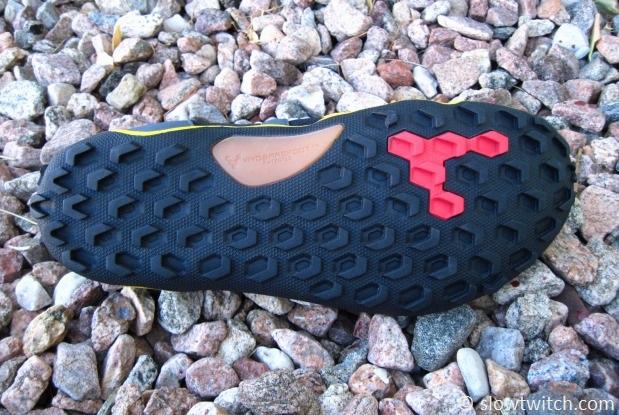
Ebersole: I think it’s generally a good thing. I would try to avoid doing the same thing all the time. Especially for someone training at a high level, where repetitive stress can become a big deal. Mix things up. Have some [minimal shoes] you wear casually, have some other shoes that you wear casually. Your body gets used to the same thing. To have [minimal shoes] in the rotation – sure. Especially if you’re susceptible to plantar fasciitis or things like that. Going around barefoot might give you trouble; and these shoes are a good substitute. You’re protecting your foot a little bit, but you’re also making your foot work.
If someone came to me and said “Should I wear minimal shoes?” I would say, “Yes – for casual wear and for when you’re doing drills.” Those would be the first two applications that I would give them. Then if they felt comfortable and they were healthy and they can do as much training as they want without any negative effects – run in them. I don’t care… if it works, great.
ST: That’s funny to me. I went through the whole extreme minimal shoe ‘renaissance’ and experimenting. Where I kind of landed is what you just said. I usually wear a more minimal shoe every day – and then when I’m going to go pound myself, I add in a little bit more protection.
Ebersole: {laughs} As usual, somewhere in the middle is probably the best approach.
In part two, we’ll dive head first in to the anatomy of minimal shoes. What makes them tick? What defines minimal? Stay tuned.



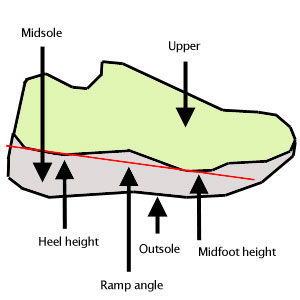
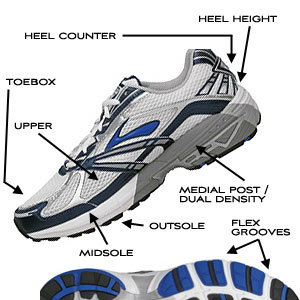
Start the discussion at slowtwitch.northend.network